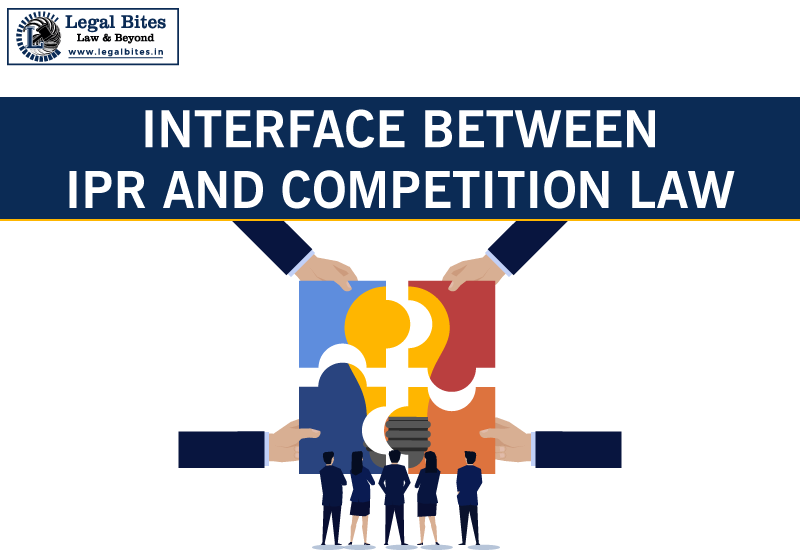Abuse of Dominant Position - Meaning, Determination and Case Laws
The abuse of a dominant position is one of the ways of interfering with competition in the marketplace.;

The abuse of dominant position is one of the ways of interfering with competition in the marketplace. Abuse is stated to occur when an enterprise or group of enterprises use its dominant position in the relevant market in an exclusionary land in an exploitative manner. Abuse of dominant position impedes fair competition between firms, exploits consumers and makes it difficult for others players to compete with the dominant undertakings on merits. Abuse of dominant position includes- ...
The abuse of dominant position is one of the ways of interfering with competition in the marketplace. Abuse is stated to occur when an enterprise or group of enterprises use its dominant position in the relevant market in an exclusionary land in an exploitative manner.
Abuse of dominant position impedes fair competition between firms, exploits consumers and makes it difficult for others players to compete with the dominant undertakings on merits.
Abuse of dominant position includes-
- Imposing unfair conditions or price
- Predatory pricing
- Limiting production/market
- Creating barriers to entry and applying dissimilar conditions to similar transactions
Determining Abuse of Dominant Position
For determining abuse of dominance – it involves a three-step process. First is the determination of the relevant market, which is assessed based on the relevant product/ geographical market. The second stage is the determination of dominance in that relevant market; the third stage is determining abuse of that dominant position.
1. Relevant Market
Under Section 2(r) of the Competition Act, 2002, relevant market means the market which the Commission may determine with reference to the relevant product market or the relevant geographical market or with reference to both markets. Determining the relevant market is key to measuring a defendant’s ability to lessen or destroy competition. Therefore, it is essential to define the relevant market, which must be defined from both geographical and product points of view. In Standard Oil Co. of California and Standard Stations Inc. v. the United States [337 U.S. 293], SC defined the relevant market as the area of effective competition within which the defendant operates.
A relevant geographical market means a market comprising the area in which the conditions of competition for the supply of the goods or provision of the services or demand of goods or services are distinctly homogeneous and can be distinguished from the condition prevailing in the neighbouring areas.
A relevant product market means a market comprising all those products or services which are regarded as interchangeable or substitutable by the consumer by reason of the characteristics of the products or services, their prices, and intended use.
2. Dominance
Section 4(1) of the Act prohibits any enterprise from abusing its dominant position. Dominant position means a position of strength enjoyed by an enterprise, in the relevant market, in India, which enables it to –
- Operate independently of competitive forces prevailing in the relevant market; or
- Affect its competitors or consumers or the relevant market in its favour.
In American Tobacco Co. v. United States [328 US 781], Court observed that a dominant position is a market-controlling position, capable of driving competing businesses from the market and dictating the price. Section 19(4) of the Act enumerates factors determining the dominant position.
3. Abuse of Dominant Position
Dominance per se is not considered bad under competition law in any jurisdiction. However, it has been universally accepted that abuse of such dominance constitutes an anti-competitive practice. The acts of the abuse of the dominant position are set out in Section 4(2)(a to e) of the Act:
- Imposing unfair or discriminatory conditions or prices (including predatory pricing)
- Limiting or restricting production, market, technical or scientific development relating to goods or services
- Practices resulting in the denial of market access
- Conditional contract as an abuse of dominant position
- Using a dominant position in one relevant market to enter into other relevant markets.
Case Laws:
- M/s Maharashtra State Power Generation Company Ltd. and Ors v. Coal India Ltd. And Ors. [Case Nos. 03, 11 and 59 of 2012]
- Shri Surinder Singh Barmi v. Board of Control of Cricket in India [[2013] 113 CLA 57]
- DLF Ltd. v. Belaire Owner’s Association [2011 102 CLA 336 (CATDEL)
Contributed By – Lakshay Anand
Sources:
- SCC Online
- T. Ramappa, Competition Law in India, Oxford Publication, 2013
Disclaimer: This document is intended to provide information only. If you are seeking advice on any matters relating to information on this website, you should – where appropriate – contact us directly with your specific query or seek advice from qualified professionals only. We have taken all reasonable measures to ensure the quality, reliability, and accuracy of the information in this document. However, we may have made mistakes and we will not be responsible for any loss or damage of any kind arising because of the usage of this information. Further, upon discovery of any error or omissions, we may delete, add to, or amend information on this website without notice.





